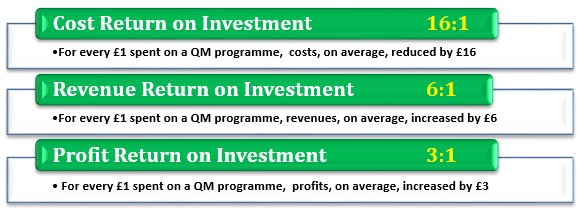It’s a constant message: improve efficiency and effectiveness. This directive continues to dominate the world of public services. But why does it appear to be a struggle?
When we are in contact with our public service customers they cite 3 key reasons why senior management have (yet) to embrace continuous improvement as the vehicle for positive change:
1. They do not have the budget
2. They do not have the time
3. They are sceptical about the return on investment
All of these are perfectly understandable, given the current challenges facing public sector organisations. It is worth considering each of these in turn:
1. You do not have the budget
The financial constraints clearly have an impact on the ability to invest in something that facilitates potentially huge benefits and personal development. This cautionary approach is with good reason when other priorities take precedence.
However, when you consider the proven returns on investment – often very quickly – that continuous improvement methodologies such as the most popular Lean and Six Sigma vehicle, then it is clear to see why more and more public sector organisations are embracing this. Take a recent real simple example:
An NHS trust recently attended a Lean Six Sigma learning programme from which they quite rightly hit the ground running and immediately started deploying their learning. Result?
Investment (2 people) = £2800
Cost saving = £100,000
Return on Investment ratio = 36:1
So, in just over 8 weeks, this team produced significant bottom line benefit! Just imagine what could be achieved with a greater spread of practitioners!
2. You don’t have the time
Similar to the above, time is precious within the public sector. Releasing people to “go on a training course” typically, does not sit at the top of the priority list. Again, in some respects, this is understandable. It is fair to say that, without skilled people who can quickly identify and execute positive change, opportunities continue to be missed. Take this real recent example:
Following recent discussions with a council, they decided that they really did not have the time available to release people from the business. Until, that is, they were offered two free places. They duly accepted this offer! From this training, and the subsequent evaluation, they de-briefed their sponsor on the true value of LSS and supported this with some quick wins they had implemented on their return to work (which incidentally, was a cost saving of over £30k!).
In the words of the two delegates “It was one of the best investments made!”
3. You are skeptical about Returns on Investment
This can be related to point 1, but let’s look at an impartial and independent view.
In a recent survey conducted by the Centre of Economic Business Research (Cebr) they identified what impact the deployment of continuous improvement had on businesses relating much of the findings to Lean and Six Sigma methodologies.
The summary cited three focal points that stood out from the survey:
What was most interesting was the point made that the above was particularly true in the public sector!
Whichever way you look at it, and in full consideration of the “reasons’ not to embrace continuous improvement, there is clear evidence that suggests it really is the vehicle for positive change!
Continuous improvement – is it really worth it? You decide!
Dembridge are running continuous improvement learning programmes incorporating Lean and Six Sigma methodologies across the UK. For more information, please contact:
Tel: 0870 034 2203 / 01905 513015
E: enquiries@dembridge.co.uk
Web: www.dembridge.co.uk
P.S. We provide special rates for the public sector!
Keith Parsons
Manager Director









